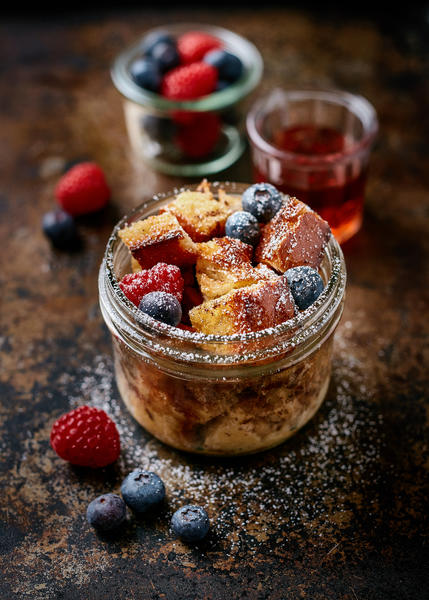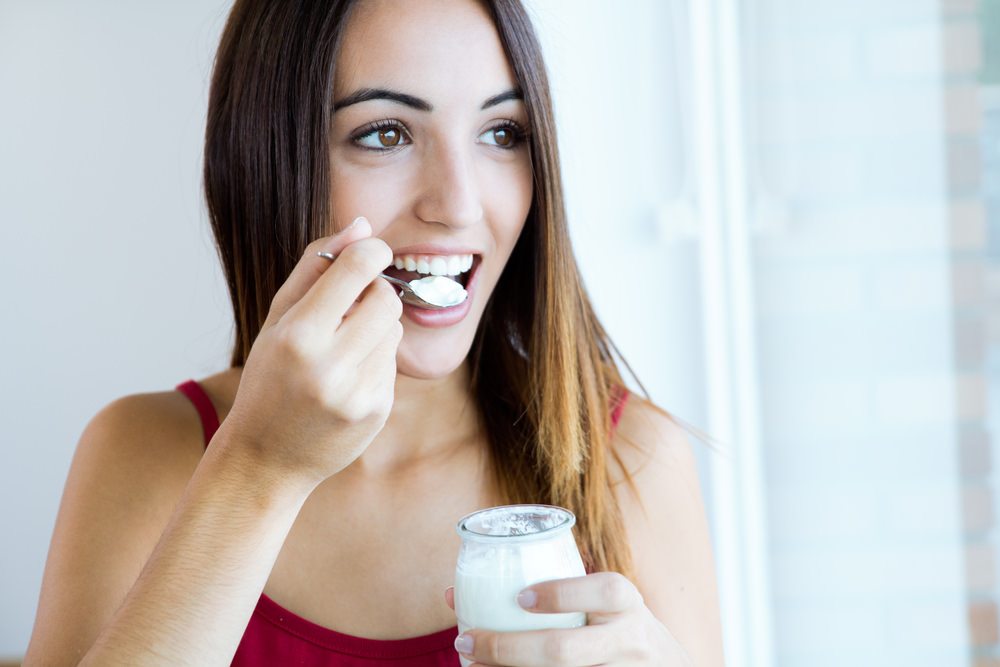As the New Year approaches, many people begin to ponder about potential New Year’s resolutions. Whether it be getting into better shape, or advancing your career, the first step in making personal and professional enhancements is shoring up the foundation… which is YOU. As you develop your New Year resolutions, it is important to prioritize mental health and wellness goals. Chinwe Williams is an associate professor at Argosy University, Atlanta. She also has private practice where she helps many of her patients deal with stress and anxiety. Wellness strategies have become essential for the prevention of physical and mental health illnesses. Below are a few simple self-care tips that Dr. Williams says you can immediately implement to help you optimize your overall mental and emotional well-being.
Dr. Williams' 6 Mental Health and Wellness Tips
- Limit the use of technology. Technology holds an important place in our modern society. However, the amount of time we spend on technology is astonishing and can impact us socially and psychologically. While technology can provide a nice escape from life stressors (e.g., Netflix binges and Instagram surfing), our attachment to technology can also breed isolation. A study looking at human behavior noted a negative relationship with increased social media use and happiness in relationships. Additionally, taking a break from technology is a great way to give your brain some much needed down time allowing creativity to flow in. Intentional disengagement with your smart phone may lead to intentional and meaningful engagement with others.
- Take a hike. Thanks to cognitive neuroscience, we know that physical health is a key component of mental health. The mind and body is not just connected but deeply intertwined. Our bodies immediately respond to the way we think, feel, and behave. Movement based practices have been shown to boost endorphins, and alleviate symptoms of anxiety and depression. Physical activity can also help clear your head of thoughts making room for sharper focus. Whether your New Year resolution involves starting a new hobby, losing a few pounds or enhancing your overall health, try to commit to brief, but regular, exercise practices. Yoga, Zumba, or hiking are just a few activities that can calm your mind and your body.
- Nurture important relationships. Relationships need maintenance, just like anything else. The importance of spending quality time with close friends and family cannot be overestimated. While there are a dozen technological ways to connect with friends, there’s nothing like real face time, specifically sharing the same space and breathing the same air as another human being. Small gestures build strong connections. Plan to spend time with loved ones on a routine basis just to unwind, laugh, and have some old fashion fun. You know that person that keeps popping up in your mind this week? Give him/her a call. It may not be such a random thought.
- Begin Journaling. The first step in improving your mental and emotional health is recognizing your thoughts and emotions, and understanding the root of them. Expressing yourself through writing can help to ease mental discomfort by releasing negative, destructive emotions. Begin the practice of journaling by jotting down your thoughts and feelings about events that occurred during the day. Journaling is very therapeutic-it enhances your self-awareness and understanding of what is deeply meaningful to you. Be sure to start or end each journaling session by including what you are most grateful for. Gratitude is acknowledging the positive aspects of your life and expressing thanks for them.
- Don’t be afraid to say “No”. Although “No” only has 2-letters, it might as well be a four-letter word for some. At one point or another, we’ve all suffered from the “disease to please.” Saying yes when you want to say no often leads to feeling overwhelmed and sometimes resentful. It can also do a disservice to yourself and the person making the request. It is important to note that by saying no to that coworker or neighbor means that you are saying yes to other things that you truly value, an afternoon with a loved one, or just time alone re-charging.
- Be compassionate with yourself. What ever your resolutions are for the New Year, remember to be kind to yourself. Tackling a new challenge is not always easy. The road to progress is pebbled with ups and downs and frequent setbacks. Setting extremely high or unrealistic expectations for yourself increases the likelihood that you may not meet them, which can reinforce feelings of shame or self-doubt. Don't beat yourself up! The key to optimizing efforts toward any goal is to remain persistent, recognize your accomplishments-no matter how small, and to be patient with yourself.
As the holidays draw to an end and the New Year quickly approaches, which mental health and wellness strategy will you begin?
THINK YOU KNOW EVERYTHING ABOUT LIPOSUCTION? THINK AGAIN. 10 OF THE MOST COMMON QUESTIONS/MYTHS ADDRESSED

OR YOU COULD DO IT VIA TRAINING - For PT inquiries and online training email go to www.trainitright.com/programs
GUEST POST:
www.zannisplasticsurgery.com
Liposuction is one of the top 5 most common surgical procedures in The United States. Approximately 363,912 procedures are performed each year. While every lay person knows that ‘liposuction sucks out fat,’ many are misguided about the procedure in terms of who is an appropriate candidate, how long the results last, and what the procedure can and cannot accomplish. Dr. John Zannis is a New Bern, North Carolina plastic surgeon who seeks to set the record straight.
Fat Will Come Back Somewhere Else After Lipo
The “fat return” fear is something plastic surgeons hear about pretty often, which is understandable! “New fat does not ‘find its way’ elsewhere after liposuction. This is one of the most common liposuction myths out there. Liposuction removes part of the fat in an area, but if the body is overwhelmed by a large amount of calories that are not burned they are stored proportionately in every remaining fat cell in the body, ” Explains Dr. Zannis. Fat cells aren't distributed evenly to begin with, and after lipo (or any type of fat cell removal) they definitely won't be distributed evenly. Even though individual fat cells grow evenly, there will be fewer in the places where the lipo happened, so those places won't fill out the same way they used to (which is what lipo patients want). Remaining fat cells in the rest of the body will pick up the slack. These cells will gain fat evenly, but not in the areas you're used to gaining in, since the fat cells in those places were liposuctioned out. He adds, “The more fat cells removed, the more the remaining fat cells will gain when you gain weight.”
Are the results of liposuction permanent?
The results of liposuction are intended to be permanent. What this means is that the fat cells which are removed will not reappear, but if you gain weight in the future, fat can accumulate in surrounding areas and the remaining fat cells in your treatment area can become larger. Dr. Zannis adds, “While the fat cells are permanently gone, you can once again find yourself with unwanted fat if you gain weight, so your healthy habits will determine whether you maintain your liposuction results.”
Is Liposuction a Reasonable Treatment for Obesity?
“Liposuction is not a good treatment for obesity,” says Dr. Zannis. He adds, “Liposuction is not effective, even as a last resort, for people who are unable to lose weight by dieting and exercise.”
Are There Non-Surgical Alternatives to Liposuction?
“Liposuction is still considered the gold standard for body contouring: It’s the most predictable, and it’s performed in a single treatment, says Dr.Zannis. However, there are minimally invasive alternatives though they won’t give you as dramatic results and treatments may need to be repeated for the desired effect. The most effective non-invasive options use heat, cold, or ultrasound on the surface of the skin. These alternatives include, but are not limited to:
CoolSculpting
UltraShape
Vanquish
Liposonix
Kybella (currently only FDA-approved for use underneath the chin)
How much weight will I lose from liposuction?
Liposuction actually has little effect on the number on your scale. It is not a method for weight loss but is instead a way to address specific areas of stubborn fat, also known as body contouring. However, many patients who want to lose weight find great success by reaching their goal weight first and then using liposuction to fine-tine the appearance they’ve worked so hard for.
Can liposuction reduce sagging skin?
“Liposuction solely focuses on removing fat, so it will not tighten excess skin. However, some patients benefit from a surgery which combines both fat removal and skin excision, like a tummy tuck or arm lift accompanied by liposuction,” says Dr. Zannis.
Will I have scars after liposuction?
Any surgery will leave a scar, but the scars from liposuction are particularly small and subtle. Dr. Zannis explains that, “The incisions only need to be large enough for the tiny tube which removes the fat, so the incisions are very small and are strategically placed in areas that are as discreet as possible.”
Does Liposuction Treat Cellulite
Cellulite is the fat right below the surface of the skin. It typically looks bumpy and uneven because the fat pushes through the connective tissue. While many people think it is unattractive, cellulite doesn’t present any health concerns. “It’s also not removed by liposuction, although the procedure might make your cellulite less visible. If it’s a concern for you, you can discuss options for reducing the look of cellulite with your doctor,” says Dr. Zannis.
Instant six pack abs & breast reductions are possible with liposuction
But it's important to manage your expectations. “The less fat you have, the more likely you will achieve sculpted, six pack abs than patients with higher body fat (despite having more fat removed),” Dr. Zannis stresses.
The More Fat Removed, the Better
“Actually, the more fat you remove, the higher the chances for risks you don’t want to deal with such as lumps and bumps.These fears are most likely driven by the fact that patients request aggressive treatment of localized fatty deposits. The more fat that is removed, the greater the potential risk of developing these problems,” says Dr. Zannis. The American Society of Plastic Surgery recommends limiting liposuction to 5 liters (about 11 pounds) in an outpatient setting.
Surviving the Holidays – A Guide For Caregivers

The holiday décor and trappings have already appeared in stores and folks are starting to make celebratory plans for the season. If you are a family caregiver for an ill or cognitively impaired individual, you may not be looking forward to the holidays; more work, more company (including those who may not realize how their presence and demands impacts on your schedule and work load), and additional stress on you and the person you care for.
Holiday gatherings easily show off an individual’s deficits. Imagine how confusing it is to be impaired and surrounded by people who know you, but you have no recall. Think about the constant noise (music, bells, etc.), bright lights and decorations that distort your sense of who and where you are. Imagine going to a family party with foods that no longer may be recognizable to you or that you are unsure how to eat.
So my advice is to learn to set realistic expectations—for you and your family member.
For your loved one:
- Attempt to maintain a regular schedule whenever possible.
- Simplify: shorten visits and events. You do not have to accept all invitations. Determine which ones might be the most important or provide the most joy to your loved one.
- Watch your family member’s reactions. Pay attention to their stress levels and make adjustments as necessary.
- Attempt to limit visitors to smaller, sporadic groups. This might be a perfect time to let other family members “visit” while you (caregiver) take a nap, Christmas shop or quietly read a book. If you must attend a large gathering, locate a quiet spot to leave the crowd for a “time out.”
- Make introductions with explanations. Act like you are introducing the visitor to your Mom or Dad.
- Maintain the familiar. Old traditions, familiar music, reading/signing holiday cards or other simple customs can be enjoyable and feel comfortable to the impaired individual.
- Pay attention: unthinking guests may offer your 90 pound mom on heavy medication the “spiked” eggnog, or mom might forget she is lactose intolerant and make herself a cheese plate.
- Keep physical conditions in mind. A person in pain or with special medical needs should be asked how much and when they want to participate. Don’t insist that they do. Give them an “out” if it becomes too exhausting. Needless to say, ask family who are sick to visit at another time.
- Where possible, solicit your loved one’s involvement in simple preparations—cooking, cleaning, sorting, etc. Most importantly, thank them for their help. Everyone likes to be appreciated.
- Get involved and do something (anything): a short walk to look at Christmas decorations, an animated holiday musical that encourages simulated dancing or swaying, decorating a tree - these are all possible activities.
- Reminisce about past gatherings, traditions or people. It’s time to bring out those old photo albums!
- Be prepared! Make sure you have a supply of medication, incontinence products, quick snacks, some baby wipes and an extra sweater when going out.
As a caregiver:
- Set reasonable expectations for yourself. You cannot do everything, and, most importantly, you don’t have to. Do you really need to make 5 kinds of cookies when you can go to Costco?
- Maintaining the same schedule and simplifying the season will go a long way in easing your stress.
- Ask for assistance! Ask family members to come sit with mom and dad while you do errands. Better yet, ask them to bake the holiday cookies or come help you clean the day before Thanksgiving. Learning to ask for help will make for better caregiving. After dinner coffee when mom is taking her nap is a great time to bring up whatever ongoing help you need.
- Self preservation: remember to take care of yourself first. Airlines advise you to put on your oxygen mask before your child’s so you can clearly and safely care for another. Self care helps you maintain your health, your patience and your sanity.
- Forget about perfection! A lopsided tree, gift cards instead of an actual boxed presents or a bakery pie will not detract from what’s important about the season. Spending time with family, keeping mom or dad comfortable with the gathering, and sharing the love will create a much longer lasting memory.
Igor Lebovic is the CEO of Kindly Care, a self-serve care management platform that makes it incredibly simple to privately hire caregivers without having to worry about sourcing, safety or compliance.
Follow Igor Lebovic on Twitter: twitter.com/kindlyhomecare
Burnbrae Farms: EGG Creations – Recipes

French Toast On-The-Go
PREP TIME: 10 min.
MAKES: 2
INGREDIENTS:
1 cup (250 mL) ½-inch diced day-old bread cubes
½ (250 mL) pkg Egg Creations Whole Eggs Original
2 tbsp (30 mL) milk
½ tsp (2 mL) cinnamon
1 tbsp (15 mL) brown sugar
Maple syrup, sliced fruit and berries, whipped cream, to serve (optional)
DIRECTIONS:
1. Pack ½ cup (125 mL) bread cubes into two, 2-cup (500 mL) mason jars. In a bowl whisk together Egg Creations Whole Eggs Original, milk, cinnamon and brown sugar. Pour mixture evenly between jars. Let soak for 5 min.
2. Place mason jars in microwave on low heat. Microwave for 1 – 2 min., on 30 sec., increments until French toast is cooked and egg has set. Keep a close eye on jars as they might bubble up.
3. Top with maple syrup, sliced fruit, berries and whipped cream (if using). Close jars with lids for a breakfast on-the-go.
TIPS:
* Try using egg bread for a sweeter version of French toast on-the-go.
* Add different spices like a pinch of nutmeg or pumpkin pie spice.
* Let bread soak in French toast mixture overnight and microwave in the morning for breakfast.

As the holiday season’s spirit and cheer kick in, it can be hard to imagine feeling glum.
But for the 3.3 million Americans suffering from anxiety -- plus millions more suffering from related conditions like depression and OCD -- the expectations of joy and merriment can backfire, triggering hopelessness and causing symptoms to flare.
That’s because the mere thought of trying to meet these expectations can be overwhelming, Maggie explains. People with anxiety and related mental health conditions imagine that others have found “perfection” in a special day, meal, gift or moment and that they are experiencing immense, unbridled joy.
Not experiencing this joy themselves, those suffering feel frustrated, flawed, ashamed and left out. Which in turn aggravates the symptoms of depression, anxiety and OCD.
Unfortunately, as is often the case with what NPR has called this silent epidemic, the result is a dangerous downward spiral where the individuals suffering say nothing about what they’re going through -- and nobody around them thinks to ask. Feeling isolated, they prefer to be alone when in fact withdrawing will only make the situation even worse.
But there’s a way to help, Maggie says:
Be aware
In the frenzied lead-up to the holidays, it’s easy for all of us to forget about anything other than our own to-do list. So it’s more important than ever to intentionally think about those we know are struggling, and to be aware of the challenges this season brings them.
Step Forward
Don’t wait for your loved one to talk to you about what they’re experiencing. On top of feeling unwell, they may also be feeling shame at the idea of putting a damper on your good time if they open up. Start a dialogue. Mention you’ve noticed they’ve been staying in the house more often. Let them know you care.
Keep Engaging Them
Keep your loved one engaged and involved as much as they are willing to be. It will help them feel supported and included. Invite them to bake cookies, go shopping or talk a walk. Even if they refuse, it still gives them an opportunity to feel connected and to know you care.
Schedule Some Exercise
It may sound strange, but exercise can seriously help augment difficult feelings and compulsions during the holidays. With the boost in serotonin that just a short jog can illicit, most people who are suffering are brought at least some relief. Start a weekly exercise plan with your loved one in order to prevent a severe dip in their emotional landscape.
About Maggie Lamond Simone
Maggie Lamond Simone is an award-winning columnist and author. With two titles already to her name, her third book, Body Punishment: OCD, Addiction and Finding the Courage to Heal (Central Recovery Press) was released in April 2015. It traces Simone’s journey struggling with obsessive-compulsive disorder, anxiety, and depression. Her writing has been featured in multiple publications and collections, including From Beer to Maternity (2009), Cosmopolitan Magazine, The Zen of Midlife Mothering (2013), Not Your Mother’s Book on Do-It-Yourselfers (2013), P.S. What I Didn’t Say (2009), and Chicken Soup for the Soul: My Resolution (2008). Simone has been a guest on NPR and is a regular blog columnist for the Huffington Post. An an adjunct professor in the department of communications at SUNY Oswego and Onondaga Community College in Syracuse, she lives in Central New York with her husband and two children.
About Body Punishment
For as long as she can recall, Maggie Lamond Simone has been plagued by self-loathing and urges to harm herself physically while emotionally sabotaging her life. In Body Punishment: OCD, Addiction and Finding the Courage to Heal (Central Recovery Press, April 2015), she reveals it all. The obsessive thoughts that drove her to cut, starve, pick, drink, pluck, purge, and otherwise hurt herself. The profound shame, the utter despair and the confusion over her own inner workings that prevented her from establishing stable, long-term goals and healthy relationships. Through this poignant story of her painful, eye-opening journey she explores the issues of substance abuse, anxiety, and depression that commonly occur with OCD, all in an effort to further the dialogue around mental illness and eliminate the shame and help others find a way forward toward healing.
8 Vitamin-packed Foods to include in your Diet for Beautiful Skin
Do you love to have healthy, glowing, beautiful skin?
Well, who doesn’t?
But, the truth is, only people who take very good care of their skin manage to impress others (with their skin). Factors like nutrition, pollution, and stress play an important role in the well-being of the skin of a person.
Even aging does. Did you know that natural aging process for human beings begins in their early 30’s itself? As you grow older, your diet and other external factors will have a big say on the appearance of your skin as well as your physiological functioning.
If you desire to have beautiful skin, then you need to motivate yourself to have nutritious food and exercise every day. Lack of nutrition, in particular, can lead to skin diseases like acne, wrinkles, rosacea, and eczema besides many others. But don’t worry, face creams and masks can help to some extent.
Our body needs vitamins, minerals, proteins, and good fats to function properly. Among these, vitamins are considered the very basic essentials of a healthy body and skin. They help protect the skin from bacteria and also boost the regeneration process. In the rest of the post, you will discover a list of vitamin-rich foods that will help you fix your skin.
- Cabbage
Cabbage is one of those vegetables that is abundantly rich in Vitamin B6. It also contains adequate quantities of manganese, folate, collagen, and fiber – all of which are very important for the skin. Additionally, cabbage also consists of calcium which is essential for bone strength, and potassium which helps controls blood pressure.
What’s more, cabbage is also a powerhouse of antioxidants and vitamin K which help improve skin elasticity.
- Red bell pepper
Your skin needs plenty of vitamin C on a daily basis and one of the best ways to obtain that is to include red bell pepper in your diet. Having adequate quantities of vitamin C helps regulate moisture in the skin and prevents wrinkles as well.
- Avocado
Avocado is known to be a powerful source of vitamin C, vitamin K, vitamin E, Vitamin B6, potassium, folate, and folic acid. Including avocado in your diet can help cure dry skin problem and prevent the breakage of the skin. Vitamin E is known to protect the skin from the sun’s harmful rays. What’s more, avocado also provides the required antioxidants and vitamin C to your skin to help improve its firmness so that you look younger than your normal age.
- Pomegranate
People don’t call pomegranate the “fruit of Gods” without reason. It is one of the best sources of antioxidants among all foods – in fact, it has higher antioxidant content than green tea and wine itself.
The vitamin C present in pomegranates can help your skin look radiant and look younger. As for the health, this fruit is believed to help minimize the risk of cancer.
- Papaya
Papaya is a natural source of iron, vitamin C, and vitamin E. Having enough vitamin E in your body helps keep your skin moisturized, and look soft and smooth. It also prevents the formation of dark spots and stretch marks, which are common among ladies. Studies say that one fresh papaya can supplement 17% of your daily vitamin E requirement.
- Lemons and Oranges
No prizes for guessing, lemon and oranges are the go-to fruits for everyone who is looking to get vitamin C in his or her body naturally. In fact, having more vitamin C also helps boost collagen, which plays a major role in the appearance of your skin. People who take collagen regularly are safe from wrinkles and many age-related skin problems.
- Mushrooms
Including mushrooms in your diet is a good idea because they are loaded with vitamin B2 and Riboflavin. In particular, vitamin B2 is said to be water-soluble in nature and helps safeguard the cells from regenerative damages. Lack of vitamin B2 can cause wrinkles and other health problems like migraines, cracks, and sore throat. What’s more, mushrooms also contain collagen which is believed to improving the elasticity of the skin.
- Kale
Kale is rich in several important vitamins for the skin. It has vitamin A which helps repair the tissues during radical damage. It has vitamin K which is known to prevent dark eye circles and pigmentation problems. Most importantly, it also has vitamin C which is a powerful antioxidant. On the whole, you need kale to get a radiant skin that is free from blemishes and abrasions.
Also, taking kale on a daily basis helps boost cell growth and even prevents dryness.
Conclusion
The foods covered in this post are loaded with the most important vitamins that prevent everything from dryness to acne to age-related problems. What’s even better is that they are also delicious and can be eaten raw or half-cooked. If you have a great cook at your home, then try tossing these foods to make a tasty, health-rich recipe and have a fun way of protecting your skin.
To learn more about the types of vitamins and their benefits, please take a look at this Infographic

7 Not So Junky Junk Foods to Grab on the Go
www.drcalapai.net

Road trips, gas stops, no time for lunch; we’ve all found ourselves at the convenience store for a fast bite on the go. While a bag of chips or chocolate bar may be an option we later regret; there are fast bites that can actually offer some health benefits. Dr. Christopher Calapai a board certified expert in osteopathic medicine specializing in longevity offers some junk food options to consider the next time there’s no time for an actual meal.
- Blue M&M’s and Blue Gatorade
Don’t get the blues about all food dyes. From candy to sports drinks, the unnatural colors of foods today can make you cringe at the thought of what’s making them colored. But, not all colored dyes are as bad as you may think. Research done by scientists at the University of Rochester found that Brilliant Blue G (BBG), found in blue M & M’s and blue Gatorade, could help reduce damage from spine injuries. When BBG was injected into lab rats with spinal cord injuries, it sped up their recovery time and ability to walk.
- Cheeze Whiz?? No way!!
Fat isn’t always a bad word. The FDA has stated that not only are all trans fats not bad, some are actually good for you. Conjugated Linoleic Acids (CLAs), although high in calories can help fight cancer, weight gain, diabetes and arthritis. It’s hard to believe, but CLAs are found in Cheese Whiz.
- Pork Rinds
Just the words pork rinds sound like instant heart attack. However did you know they are a fantastic source of protein? A one-ounce serving of this fried snack has seventeen grams of protein, seven times the amount of found in a serving of potato chips. Plus, 43% of the fat found in pork rinds come from oleic acid, the same healthy fat found in olive oil.
- Beer
Some studies have found that beer can actually help increase bone mineral density because it contains silicon, making bones stronger and less likely to fracture. A Harvard University study found that beer could prevent blood clots and reduce the risk of stroke. Italian researchers found that beer can raise HDL, the good cholesterol in your body. Opt for a light beer with fewer calories to avoid that full feeling.
- Graham Crackers
They are the next best things to cookies if you’re trying to keep your health in mind. Graham crackers contain much less sugar than regular cookies and are still sweet enough to satisfy a craving. Plus, they are made with flour that undergoes a special milling process, preserving more of the whole wheat than in usual milling.
- Popcorn
This is a snack that gets two thumbs up. Popcorn is packed with fiber and polyphenols, which are antioxidants that help to protect us from heart disease and certain cancers. Surprisingly, popcorn has more iron than eggs and spinach! It is also gluten-free, which makes it an option for those with Celiac Disease and other gluten allergies. Lastly, popcorn is mostly air. This means it fills you up, helping to stave off hunger cravings.
- Beef Jerky
Forget about the leather-tasting jerky of years past, today’s gourmet jerky is delicious and can be healthy. Beef Jerky, just like its non-dried version of meat, is high in protein, iron and zinc. It, also, contains heart-healthy monounsaturated fats. Be sure to look for natural beef jerky as the newer gourmet styles that are packed with flavor and free of nitrates.
About the Doctor:
Dr. Christopher Calapai, D.O. is an Osteopathic Physician board certified in family medicine, and anti-aging medicine. Proclaimed the "The Stem Cell Guru" by the New York Daily News, Dr. Calapai is a leader in the field of stem cell therapy in the U.S. His stem cell treatments have achieved remarkable results in clinical trials on patients with conditions as varied as Alzheimer's, arthritis, erectile dysfunction, frailty syndrome, heart, kidney and liver failure, lupus, MS and Parkinson's. He has worked with Mike Tyson, Mickey Rourke, Steven Seagal, and Gotham's, Donal Logue; and as a medical consultant for the New York Rangers. Connect with him via twitter @drcalapai or at www.drcal.net
HAVE TROUBLE COPING WHEN THE CLOCKS “FALL BACK?”
YOU MAY HAVE SEASONAL AFFECTIVE DISORDER AKA.. SAD

www.comprehendthemind.com
The clocks “fall back” November 6, 2016 which means that there will be less day light. Many people chalk up feeling blue in winter as simply a fact of cold weather and lack of sunshine. But 4 to 6 percent of people may have a winter depression which is clinically referred to as Seasonal Affective Disorder. Another 10 to 20 percent may have mild SAD. SAD is four times more common in women than in men. Although some children and teenagers get SAD, it usually doesn't start in people younger than age 20. Your chance of getting SAD goes down as you get older. SAD is also more common the farther north you go. For example, it's seven times more common in Washington State than in Florida. Dr. Sanam Hafeez is a neuro-Psychologist in NYC (Manhattan and Forest Hills, Queens), and treats patients in her practice who display and express mood changes once October rolls around.
Dr. Hafeez explains that, “In most cases, seasonal affective disorder symptoms appear during late fall or early winter and go away during the sunnier days of spring and summer. However, some people with the opposite pattern have symptoms that begin in spring or summer. In either case, symptoms may start out mild and become more severe as the season progresses.”
The following are symptoms to look for to see if you are suffering from SAD
Depression
Hopelessness
Anxiety
Loss of energy
Heavy, "leaden" feeling in the arms or legs
Social withdrawal
Oversleeping
Loss of interest in activities you once enjoyed
Appetite changes, especially a craving for foods high in carbohydrates
Weight gain
Difficulty concentrating
How is SAD treated?
Many people with SAD will find that their symptoms respond to a very specific treatment called bright light therapy. For people who are not severely depressed and are unable—or unwilling—to use antidepressant medications, light therapy may be the best initial treatment option says Dr. Hafeez.
Light therapy consists of regular, daily exposure to a “light box,” which artificially simulates high-intensity sunlight. Practically, this means that a person will spend approximately 30 minutes sitting in front of this device shortly after they awaken in the morning. If patients do not improve, a second exposure of 20-30 minutes may be added in the early afternoon. Treatment usually continues from the time of year that a person’s symptoms begin, such as in fall, on a daily basis throughout the winter months. Because light boxes are created to provide a specific type of light, they are expensive and may not be covered by insurance. Unfortunately, having lots of lamps in one’s house and spending extra time outside is not as effective as this more expensive treatment.
Dr. Hafeez states that, “Side effects of light therapy are uncommon and usually reversible when the intensity of light therapy is decreased. The most commonly experienced side effects include irritability, eyestrain, headaches, nausea and fatigue.”
Scientific studies have shown light therapy to be very effective when compared to placebo and as effective as antidepressants in many cases of non-severe SAD. Light therapy may also work faster than antidepressants for some people with notable effects beginning with in a few days of starting treatment. Other people may find that it takes a few weeks for light therapy to work, which can also be the case for most people who take antidepressant medications. Although not explicitly recommended, some people may elect for treatment with both light therapy and antidepressant medications. The combination of these treatments may be synergistic and a more robust way to address the symptoms of SAD.
In her practice Dr. Hafeez has found that antidepressant medications have been useful in treating people with SAD. Of the antidepressants, fluoxetine (Prozac) and bupropion (Wellbutrin) have been studied in the treatment of SAD and shown to be effective. The U.S. Food and Drug Administration (FDA) has approved these medications for treatment of major depressive disorder. Dr. Hafeez cautions that, “Any person considering treatment with an antidepressant medication should discuss the benefits and risks of treatment with their doctors.”
Individuals with a predisposition to bipolar disorder should be more cautious in approaching treatment for SAD and depression in general. Light therapy, like antidepressant therapy has been associated with increased risk of experiencing a manic episode. The specifics of this are beyond the scope of this review and again, should be discussed with one’s doctors.
Finally, a healthy lifestyle, including regular exercise, a good diet and a strong social network, is also likely to help you cope with SAD.
Sanam Hafeez Psy.D
New York State Licensed Neuropsychologist and School Psychologist
www.comprehendthemind.com
Dr. Sanam Hafeez is a New York City based Neuropsychologist and School Psychologist. She is also the founder and director of Comprehensive Consultation Psychological Services, P.C. She is currently a teaching faculty member at Columbia University.
Dr. Hafeez graduated from Queens College, CUNY with a BA in psychology. She then went on to earn her Master of Science in Psychology at Hofstra University. Following that she stayed at Hofstra to receive her Doctor of Psychology (Psy.D.) She later completed her post-doctoral training in Neuropsychology and Developmental Pediatrics at Coney Island Hospital.
Dr. Hafeez’s provides neuropsychological educational and developmental evaluations in her practice. She also works with children and adults who suffer from post traumatic stress disorder (PTSD), learning disabilities, autism, attention and memory problems, trauma and brain injury, abuse, childhood development and psychopathology (bipolar, schizophrenia, depression, anxiety, etc…) In addition, Dr. Hafeez serves as a medical expert and expert witness by providing full evaluations and witness testimony to law firms and courts.
Dr. Hafeez immigrated to the United States from Pakistan when she was twelve years old. She is fluent in English, Urdu, Hindi and Punjabi (Pakistani and Indian languages.) She resides in Queens, New York with her husband and twin boys.
Morning, Afternoon, and Night... Which Foods Will Do You Right?

If you are not in competition prep or following a weight loss plan from me www.trainitright.com/programs use the tips in this guest post for healthy eating:
Before you grab that morning cup of coffee on an empty stomach, that lunchtime slice of pizza, or indulge in a steak dinner or ice cream while watching TV, understand that what you eat and when you eat it can lead to stomach upset. It can also trigger more severe issues in your gut. On the flip side, there are some foods that when eaten at certain times of day may soothe already existing stomach issues or may even prevent stomach ailments from occurring down the line. We spoke with Dr. Gina Sam Assistant Professor in the Division of Gastroenterology, Department of Medicine at Mount Sinai School of Medicine, New York who offers insights on what and when to eat certain foods for a healthy gut.
Best Bets for Morning
Yogurt
It’s important to start the day with a healthy breakfast that factors in stomach health. Probiotics found in Greek yogurt is ideal as it regulates the growth of harmful bacteria that grown in the digestive tract. Probiotics also keep colon lining healthy as it breaks through gastric acid and gets to the colon. In 2015 a study published in the The Korean Journal of Gastroenterology showed that yogurt might improve intestinal function for those with inflammatory bowel disease. Those who are lactose intolerant can enjoy lactose free yogurt.
Oatmeal
Oatmeal is a great bet for breakfast and can be topped with blueberries another gut friendly food. Oatmeal doesn’t cause acid reflux. It soothes any morning stomach upset and regulates bowel movements.
Fresh Fruit
Honeydew, cantaloupe, and watermelon are great options for those sensitive to reflux. Bananas help restore potassium, electrolytes and normal bowel function, especially if you have diarrhea. Bananas are also high in fiber, which is great for digestion.
The Lunchtime Lowdown
Salads
Eating leafy greens daily is a great for digestion. Lunchtime salads that include grilled salmon; chicken or turkey won’t cause reflux and will be easily digestible throughout the afternoon. If you are sensitive to acid then you will want to avoid onions or tomatoes and for some even the seeds in cucumbers can trigger a bout of stomach cramping. Be careful with lemon juice and vinegar in salad dressings, which can promote reflux. Try adding fennel with arugula and baby spinach along with parsley. Parsley is known to help digestion and settles the stomach.
Kimchi
This delicious Korean coleslaw is made primarily with cabbage, which promotes the growth of healthy bacteria in the colon. Also cabbage helps to eliminate waste regulating bowl movements. Home made sauerkraut is also a delicious option but be mindful if you are sensitive to spicy foods. This is why it is best to make your own so you can regulate the amount of spice.
Mediterranean Plates
Lunchtime is optimal for grilled veggies, legumes such as lentils with olive oil along with grilled fish or chicken. Preparing a plate of various whole grains, cauliflower, carrots, figs and pears are all great sources of fiber for the mid day.
A Digestible Dinner
You really want to focus on ease of digestion at dinnertime. Foods that are high fat
can overwhelm the stomach, resulting in acid reflux and heartburn. Steatorrhea or pale colored stool is excess fat in the feces. People with IBS fare better when they avoid high fat foods. That said here are some options for a healthy gut.
Grilled Fish
Cold-water fish such as salmon, halibut, or tuna when grilled in olive oil are full of omega-3 fatty acids, which can address any inflammation in the digestive tract. According to a 2014 study featured in the World Journal of Clinical Cases, omega-3’s were sites as being beneficial to those with ulcerative colitis.
Grilled Chicken with Couscous or Brown Rice
Chicken another lean meat that offers protein and is easy to digest goes great with couscous or brown rice especially if you tend to get acid reflux after late meals. Another option for a side dish is guacamole or avocado slices with lime. Artichokes also feed the good bacteria in your gut as does asparagus and lentils.
Stomach Friendly Snacking
When it comes to snacking there are several options you can reach for. Granny smith apples with almond butter, baby carrots and hummus, hallowed out cucumber and cottage cheese, kale and zucchini chips and assorted nuts (not peanuts) are all healthy and good for the gut.
You know your body best. Pay close attention to what agrees with you at varying times of the day and if you notice changes in how you take to certain foods see your doctor.
About Dr. Gina Sam:
Dr. Gina Sam, MD/MPH is an Assistant Professor in the Division of Gastroenterology, Department of Medicine at Mount Sinai School of Medicine, New York. She is the Director of the Mount Sinai Gastrointestinal Motility Center specializing in achalasia, gastroesophageal reflux, functional disorders, irritable bowel syndrome, gastroparesis, and anorectal disorders including pelvic floor dyssnergia and fecal incontinence.
In addition, she does practice General Gastroenterology including colon cancer screening with colonoscopy. She also has a special interest in Women's Health Issues.
Dr. Sam graduated from Tufts University School of Medicine with her medical degree and her Master's in Public Health with a concentration in Community Health in 2003. She has established the Mount Sinai Gastrointestinal Motility Center at Mount Sinai Medical Center providing a multidisciplinary approach to motility and Functional gastrointestinal disorders.
We talk openly about asthma & allergies. Giving same transparency to mental health issues will lift the crippling silence, says award-winning columnist, author, OCD & anxiety survivor

Last week, Harry Potter series star Devon Murray bravely opened up about his decade-long struggle with depression. But why did it take him so long?
Maggie Lamond Simone, author of Body Punishment -- who has struggled her entire life with OCD, anxiety and depression -- knows all too well that shame, the fear of stigma and a general lack of awareness about the signs and symptoms of mental illness keep a significant number of people from speaking up about their condition.
The silence, Maggie says, can cause utter devastation by perpetuating a culture of secrecy, causing shame to deepen, destroying self-esteem and alienating those affected. It can also prevent people from seeking the treatment and support they need.
The only way forward toward ending what NPR has called a silent epidemic, Maggie says, is to lift the taboo around calling mental illnesses by their name. Here’s how:
Identify the illness.
Mental illnesses come in all shapes and sizes, from depression and anxiety to OCD, eating disorders and addiction. Be intentional about identifying the specific condition you, a friend or a loved one is suffering from. This will help make the condition and its manifestations seem less mysterious and confusing, lifting a layer of stigma.
Get in the habit of calling each illness by its name.
When consistently referred to by its proper name, a mental health condition becomes merely an aspect of the individual suffering from it rather than a defining characteristic -- as with asthma or allergies. After all, just as nobody chooses to have asthma or is identified by it, nobody chooses to have -- or should be identified by -- OCD.
Be intentional in talking openly about mental illness.
Whether you struggle personally with a mental health condition or know somebody who does, be intentional in speaking about it openly. Again, think of how you’d speak of asthma. The condition itself won’t go away, but with a name and no shame it becomes just another aspect of whoever has it. It can be managed.
Finally, remember: speaking up will lead to a domino effect that will go a long way toward alleviating suffering and devastation.
Maggie would be happy to talk about this in more detail, and / or I’d be glad to send you a copy of her book. Let me know if you’re interested!
About Maggie Lamond Simone
Maggie Lamond Simone is an award-winning columnist and author. With two titles already to her name, her third book, Body Punishment: OCD, Addiction and Finding the Courage to Heal (Central Recovery Press) was released in April 2015. It traces Simone’s journey struggling with obsessive-compulsive disorder, anxiety, and depression. Her writing has been featured in multiple publications and collections, including Cosmopolitan Magazine, The Zen of Midlife Mothering (2013), Not Your Mother’s Book on Do-It-Yourselfers (2013), P.S. What I Didn’t Say (2009), and Chicken Soup for the Soul: My Resolution (2008). Simone has been a guest on NPR and is a regular blog columnist for the Huffington Post. An an adjunct professor in the department of communications at SUNY Oswego and Onondaga Community College in Syracuse, she lives in Central New York with her husband and two children.
About Body Punishment
For as long as she can recall, Maggie Lamond Simone has been plagued by self-loathing and urges to harm herself physically while emotionally sabotaging her life. In Body Punishment: OCD, Addiction and Finding the Courage to Heal (Central Recovery Press, April 2015), she reveals it all. The obsessive thoughts that drove her to cut, starve, pick, drink, pluck, purge, and otherwise hurt herself. The profound shame, the utter despair and the confusion over her own inner workings that prevented her from establishing stable, long-term goals and healthy relationships. Through this poignant story of her painful, eye-opening journey she explores the issues of substance abuse, anxiety, and depression that commonly occur with OCD, all in an effort to further the dialogue around mental illness and eliminate the shame and help others find a way forward toward healing.









